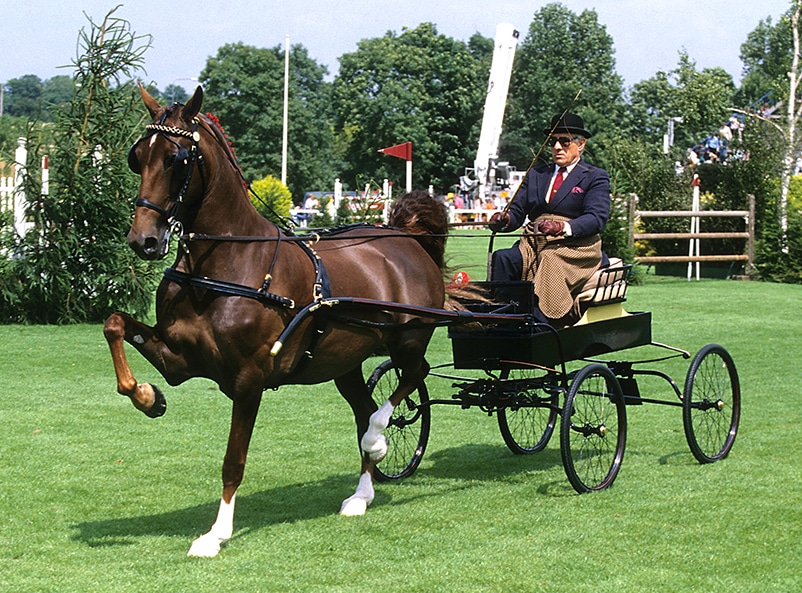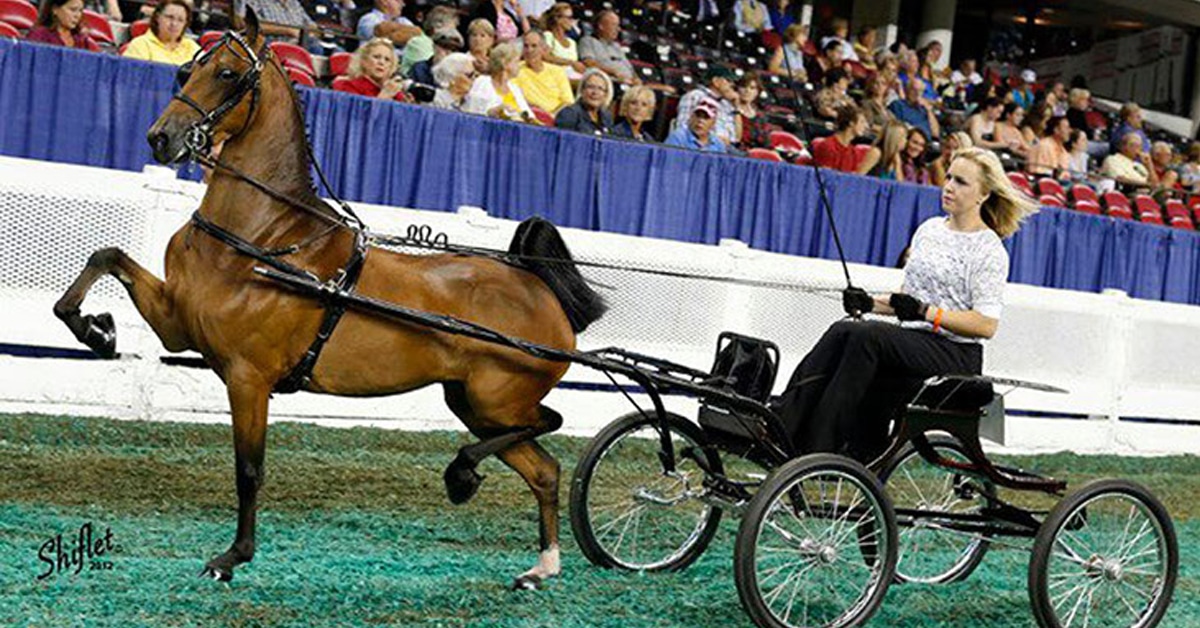The Hackney breed was originally developed as a riding horse in Norfolk, England, in the 14th century. In 1729, a Norfolk Trotter stallion and an Arabian stallion contributed to the Norfolk Roadster, a fast, heavily-built horse with stamina which became the foundation stock for the modern Hackney Horse. (Note: The Norfolk Trotter stallion Bellfounder became the damsire of Hambletonian 10 ‒ the founding sire of the Standardbred breed ‒ in the US.)
As the roads improved, the Hackney also became a valued high-stepping harness horse. In the 1800s the breed began to decline with the advent of the railroad, but in 1883, the Hackney Horse Society was formed to preserve and promote the breed. The Hackney Pony was developed in the late 19th century through cross-breeding Hackney horses to various pony breeds in order to create a fancy show pony.
Characteristics
The Hackney breed displays a proud, high-held head, alert eyes and ears, a high crest, muscular legs, short body, and strong, athletic quarters.
The most common Hackney coat colours are brown, bay, and black, but chestnut and roan do occasionally occur. Their most distinguishing trait is their extravagant, lively, high-stepping action, with snappy knees and hocks that move with a piston-like action while remaining well-balanced and travelling straight and true.
Hackney Horses stand between 14.2-15.2 hands, while ponies typically stand 12 to under 14.2 hands. Ponies should show distinct pony characteristics (i.e. small and neat ears; bright eyes, fine muzzle) and a brisker leg action.
Uses
Today’s Hackney is shown in-hand and in harness (singles, pairs, and four-in-hands) in carriage and combined driving events. They can also be found in dressage, eventing, hunter/jumper and western events, as well as competitive trail riding.
For more information, visit:
Hackney Horse Society



